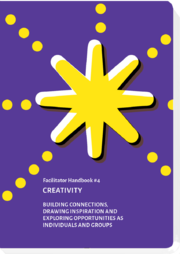
Persona method: Developing a better and more human picture of target groups or key stakeholders.
Goals
- Participants gain a knowledge of the target groups, audiences, and community members involved in an activity.
- Participants gain analytical skills.
- Participants improve their empathy.
Steps
1. Short Description
To develop the persona, give a short raw description by answering the following questions about the imagined person:
Attributes:
- Name
- Age, gender
- Marital status
- Occupation
- Hobbies
- Beliefs and values
Social context:
- Social role(s)
- Position in the social hierarchy
- Personal network, memberships
2. Add deeper information:
In the next step, gather information about the following aspects:
Motivations. goals, needs:
- What are motivations, goals, and needs of actual people?
- What are their challenges?
- What emotions and passions are involved?
Your activity:
- Opinions, emotions and wishes regarding your activities
A group might make use of a roleplaying activity. One or two learners step into the role of a persona and are interviewed by a colleague. A fourth group member might document the key points that come up during the interview.
Another option is to draw the persona individually, and then present the different types of personas to each other. Discuss and collect the key features (e.g. on a flipchart, separating motivations, goals, and needs).
3. Personal touch
Draw a common persona then explain it in short sentences. Include an image, name, and quote that expresses the needs and goals of the persona.
If the task is conducted in a larger group, facilitators can add an additional step of identifying the most common aspects shared between the personas of the various groups groups in a plenary setting.
4. Explore feedback
Chat, talk, or write to people that share characteristics with your persona.
- What are their goals and needs?
- What are possible motivations for their being involved in or supporting your activity, or using your product?
- Which social characteristics in the persona did you not see before?
- What kind of new knowledge about local conditions needs to be included?
5. Adjust
Alter the persona based on feedback.
Reference
Inspired by: http://www.opendesignkit.org/methods/personas
Handbook for Facilitators: Creativity Handbook
This text was published in: N. Zimmermann (ed.), E. Leondieva (ed.), M. Gawinek-Dagargulia (ed.) (2018). Creativity Handbook. Building connections, drawing inspirations & exploring opportunities as individuals & groups.Competendo Handbook for Facilitators.

Nils-Eyk Zimmermann
Editor of Competendo. He writes and works on the topics: active citizenship, civil society, digital transformation, non-formal and lifelong learning, capacity building. Coordinator of European projects, in example DIGIT-AL Digital Transformation in Adult Learning for Active Citizenship, DARE network.
Blogs here: Blog: Civil Resilience.
Email: nils.zimmermann@dare-network.eu




